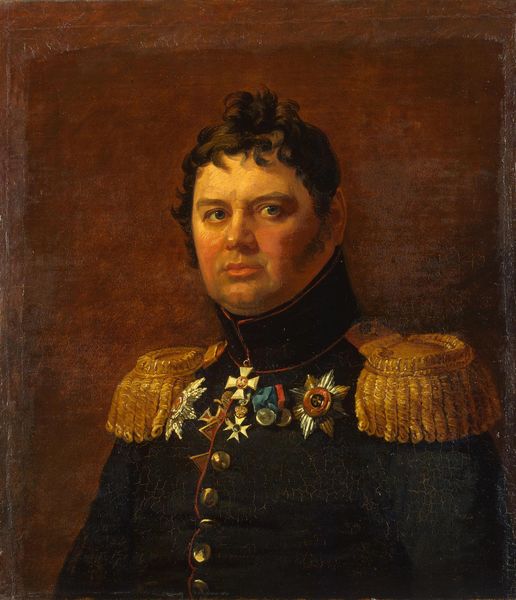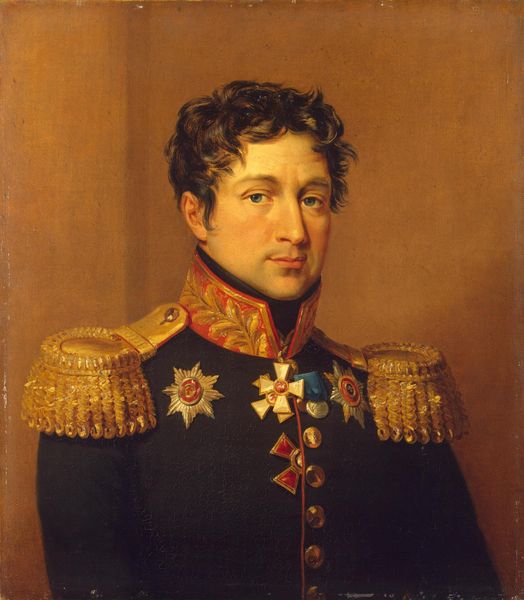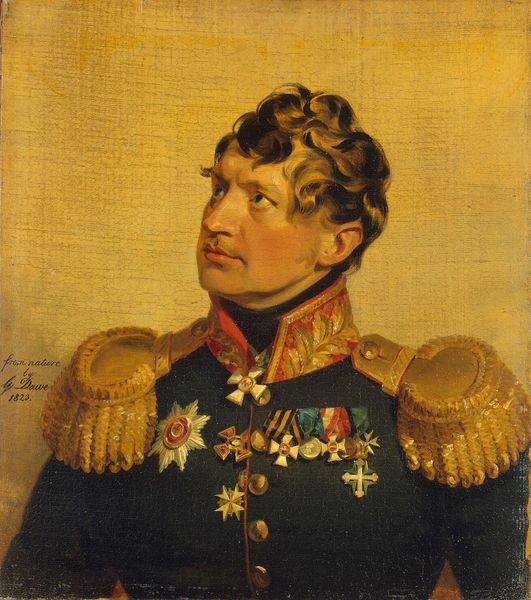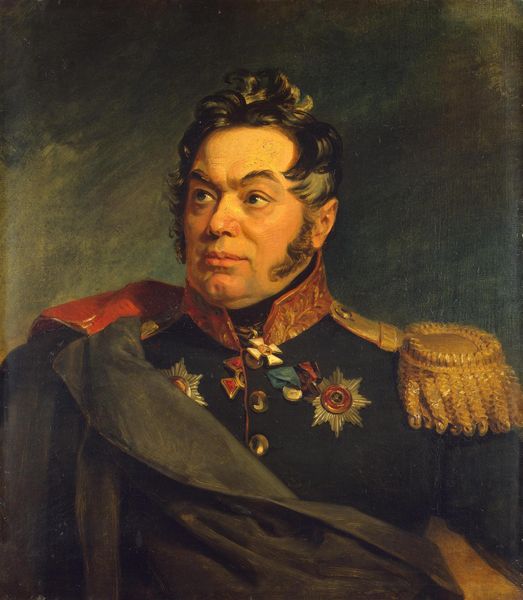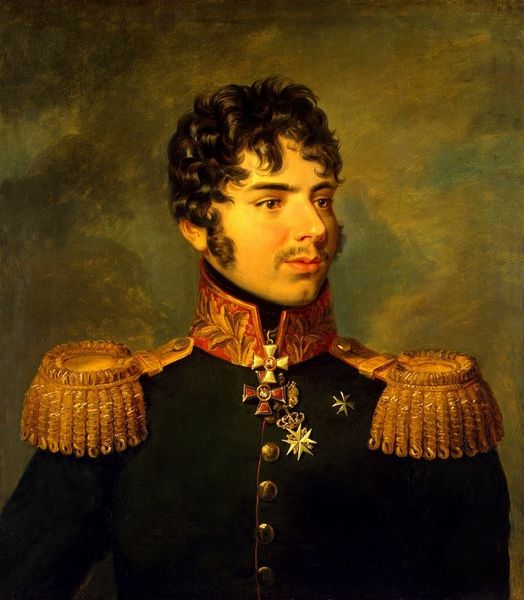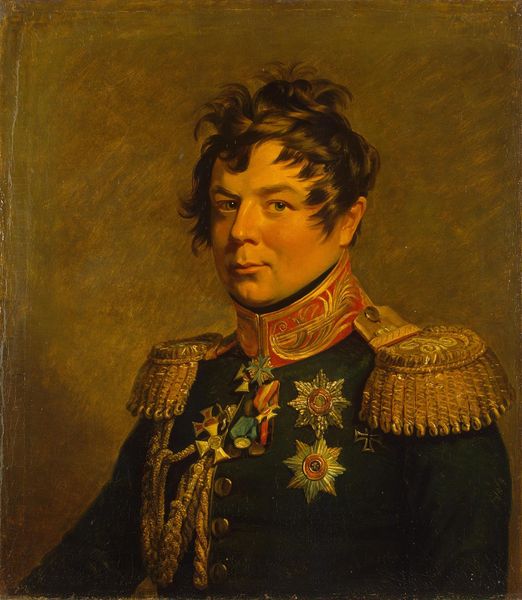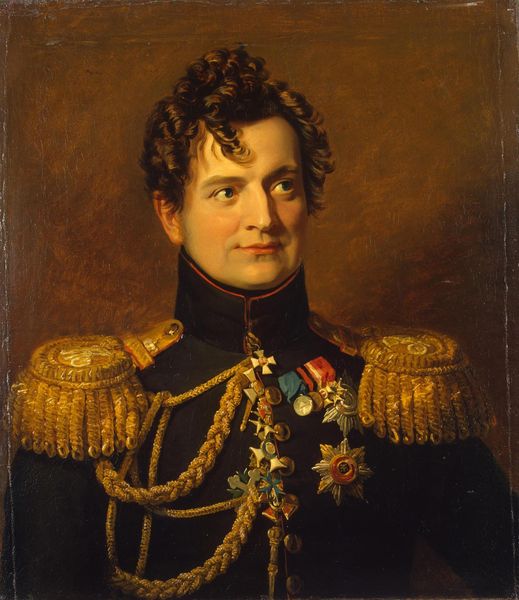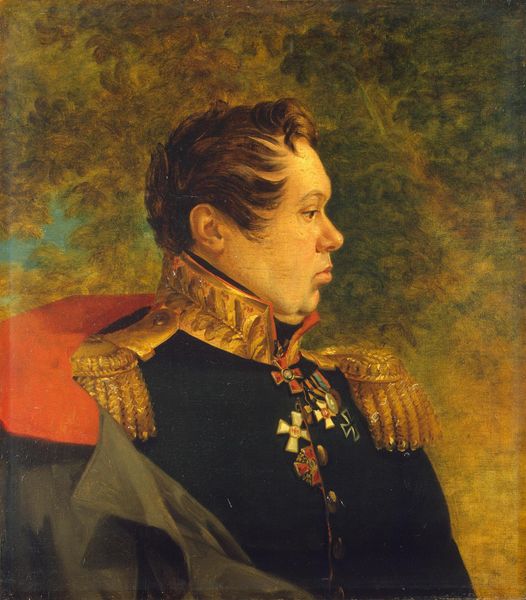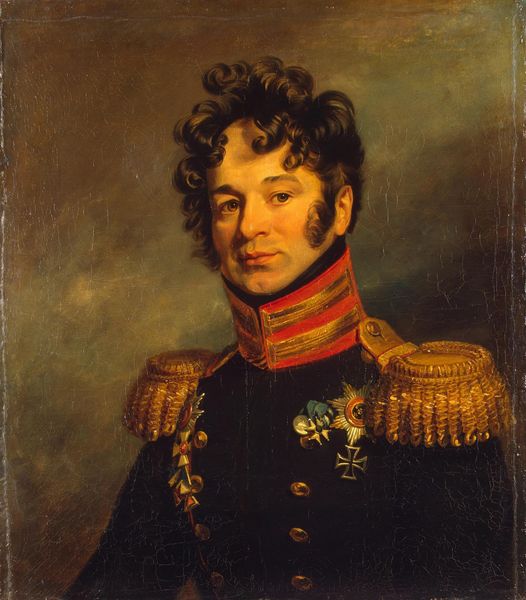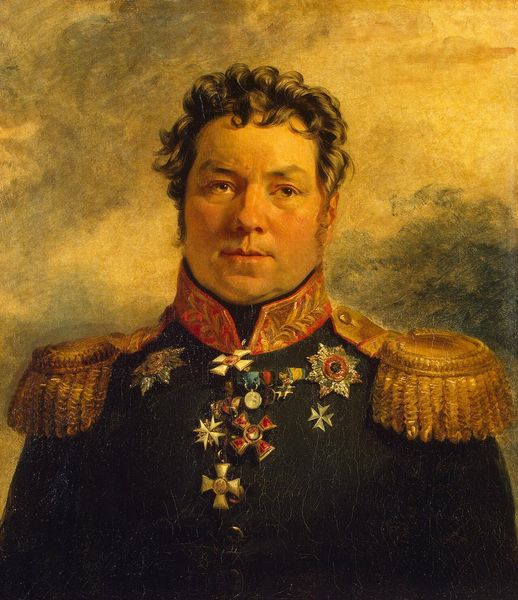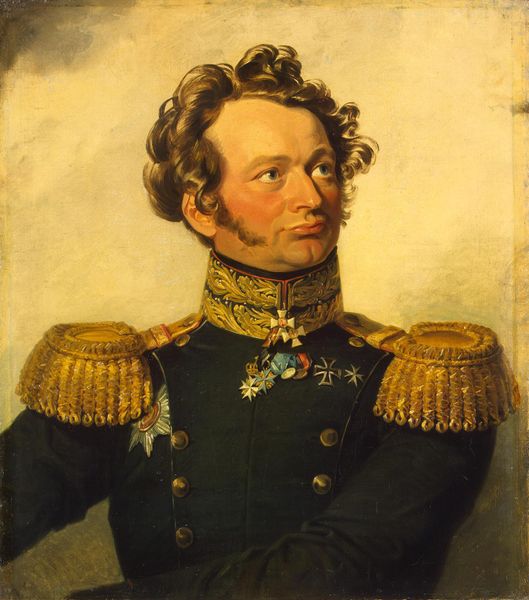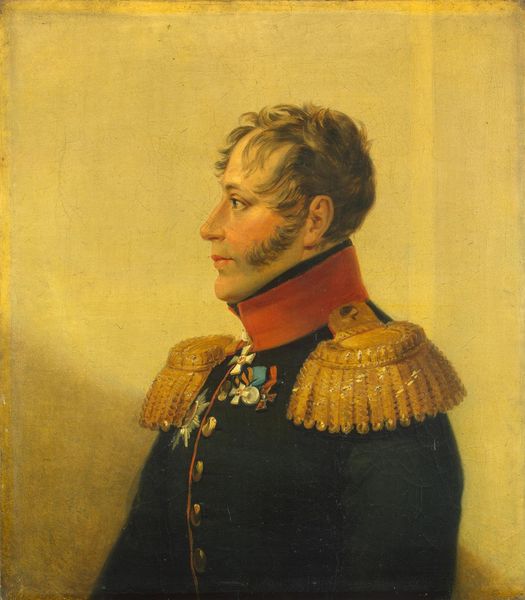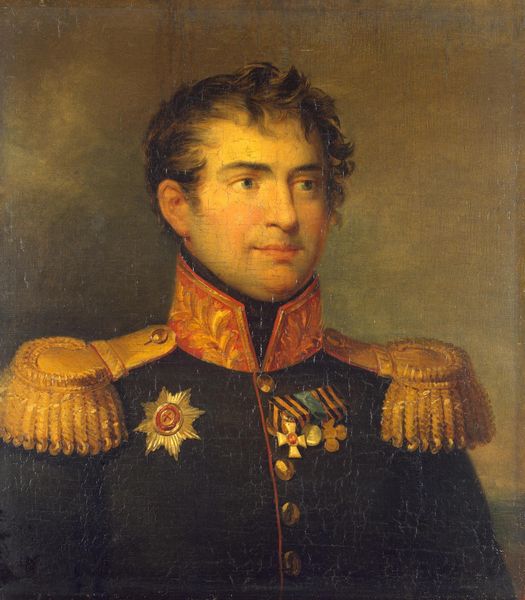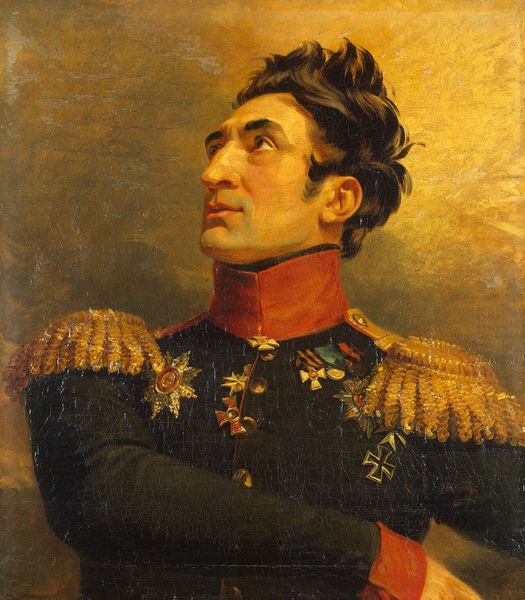
oil-paint
#
portrait
#
oil-paint
#
oil painting
#
romanticism
#
history-painting
#
academic-art
Copyright: Public domain
Editor: Here we have a portrait of Ivan Sergeyevich Leontyev, a Russian Major General, rendered in oil paint by George Dawe. It’s striking how much the gold braid and epaulettes contrast with the almost somber expression on his face. What do you see in this piece? Curator: From a materialist perspective, I see a confluence of power and its representation through the meticulous application of oil paint. The gold isn't just decoration; it represents state-sponsored industry, trade routes plundered and refined to adorn a military figure. Editor: So, it’s less about the individual and more about what the materials signify? Curator: Precisely. Dawe, as the artist, is essentially participating in the propaganda machine. The oil paint, manufactured and distributed within a particular socio-economic system, is used to elevate this individual. The very labor involved in creating this—from mining pigments to weaving the general's uniform—is embedded in the artwork. Think about the raw materials! Editor: It's interesting to consider the unseen labor within the artistic process. Is there any space for appreciation of skill here, or does it all boil down to resource extraction? Curator: The skill is undeniable, but inseparable from the socio-economic structure that commissions and supports such craftsmanship. Appreciating the artistic technique doesn't negate our awareness of its role in reinforcing societal hierarchies. It all reflects the means of production and the resulting power structures of the time. The subject himself has become a commodity! Editor: I see your point; it encourages one to look beyond the immediate beauty. I had never considered approaching the analysis of portraits in such a tangible manner. Curator: And hopefully, a more critical manner, aware of art’s entanglement with power.
Comments
No comments
Be the first to comment and join the conversation on the ultimate creative platform.
